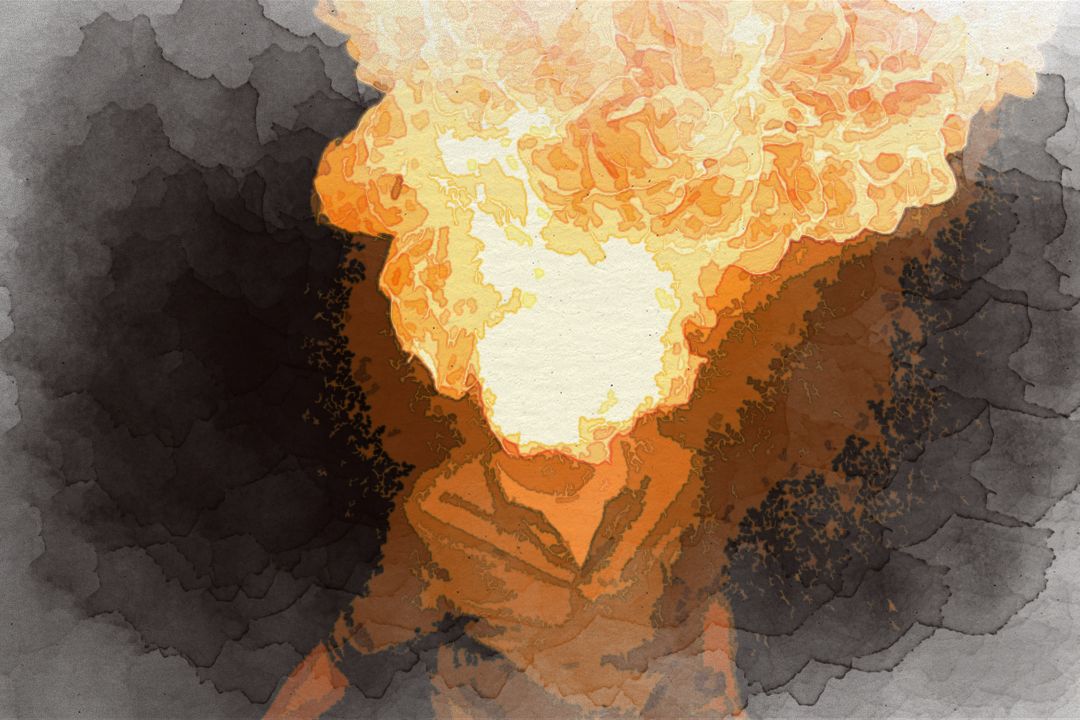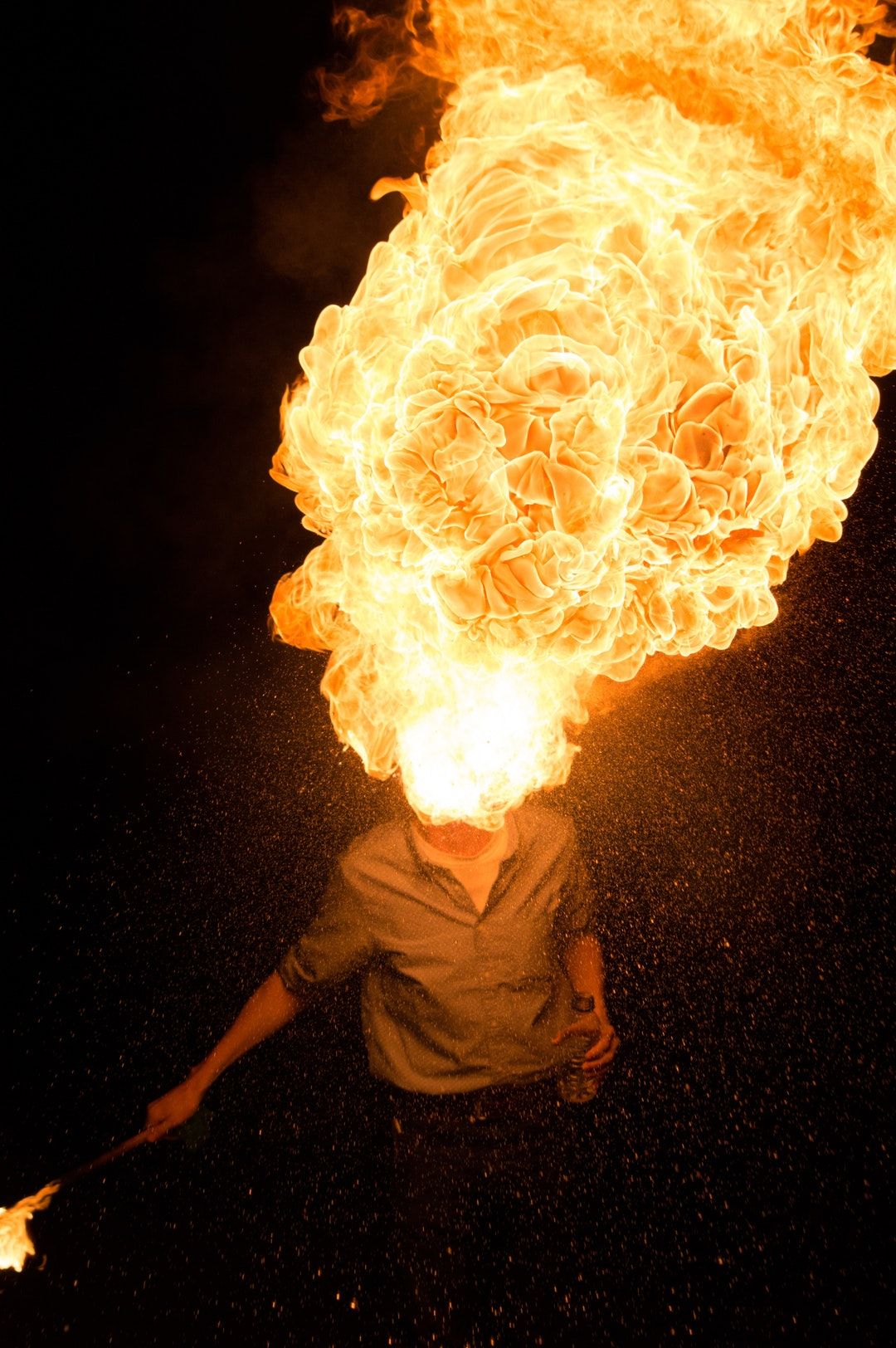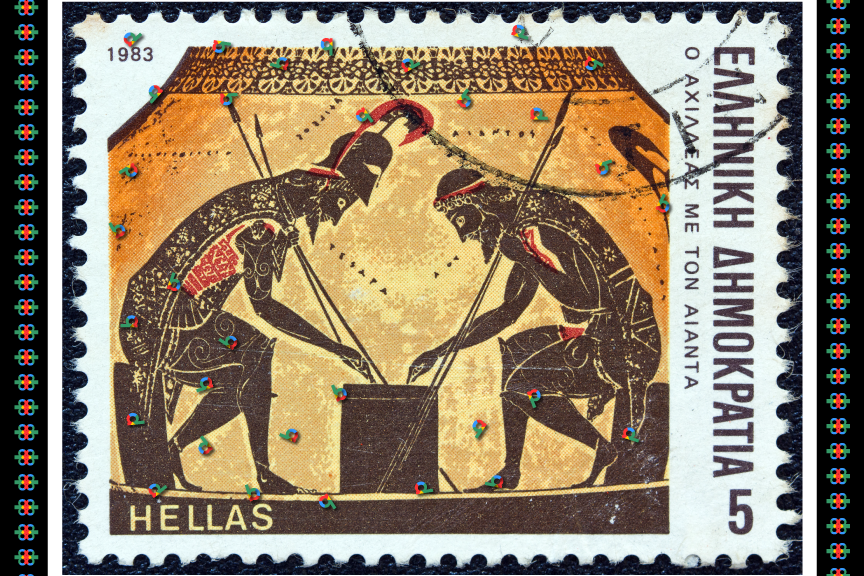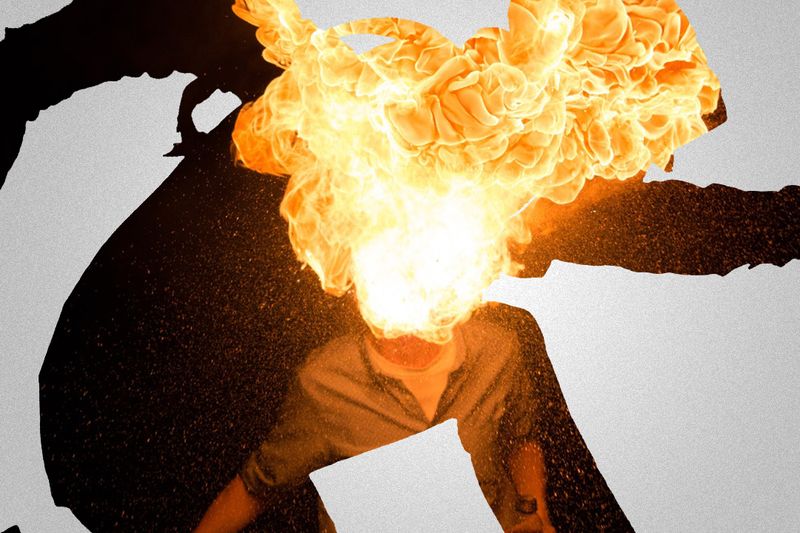For What Reason?

As Peter Shaffer put it to Arnold Wesker; THE planksip Möbius
A profound sense of anticipation hung in the air in the heart of a dimly lit room, where shadows clung to the walls like ancient secrets. It was palpable and dense, like the prelude to a storm, stirring emotions and thoughts yet to be unleashed.
In a corner, obscured by the dimness, stood a figure. They were more a silhouette than a person, shrouded in mystery and silence, an observer of the spectacle about to unfold. Their eyes, hidden in the shadow, were fixed intently on the scene, missing not a detail of the drama.
The room's centrepiece was an array of logos, but these were no ordinary symbols. They were alive, each a breathing entity, exuding an aura of ancient knowledge and modern wisdom. As they flickered and danced, they spoke in tongues that resonated deep within the soul, each word, each syllable, charged with meaning and history.
The audience, a diverse group of thinkers, dreamers, and seekers, sat entranced. Each burst of flame from the logos elicited a collective gasp, a shared moment of awe and wonder. The words uttered by these ethereal logos stirred something deep within the hearts of all present. It was as if the logos were not just speaking but reaching into the very depths of their beings, invoking a response from places long forgotten or perhaps never before explored.
The logos spoke of potential – of what humanity had once aspired to be, the heights it had sought to reach, and the dreams that had been dreamt but not yet realized. They were vivid manifestations of collective ambitions and fears, symbols of hopes and dreams that had once burned bright but had since been dimmed by the relentless march of time.
One logo, a magnificent phoenix rising from the ashes, spoke of renewal and the endless cycle of destruction and rebirth. It symbolized resilience, the unyielding spirit of humanity that refuses to be extinguished, even in the face of overwhelming adversity.
Another logo, a tree with deep roots and sprawling branches, talked about growth, connection, and the strength found in unity. It represented the interconnectedness of all life, the shared destiny that binds every living creature to one another.
And then there was the logo of a clock, its hands spinning rapidly, a relentless reminder of the passage of time, of moments lost and opportunities seized. It spoke of the fleeting nature of existence, the urgency of action, and the importance of making every second count.
With each word from these logos, the audience was transported through time and space, reliving moments of triumph and despair, of love lost and found. The images that flickered around the room brought with them a sense of nostalgia and a pang of what-ifs. What if different choices had been made? What if different paths had been taken?
The mysterious figure in the corner, a silent sentinel, watched over this dance of fire and shadow. They were a guardian of memories, a keeper of stories long forgotten. They had witnessed the rise and fall, the joy and sorrow of countless ages, and understood the power these logos wielded – the power to evoke, remind, and inspire.
As the logos' fiery discourse continued, a resonant voice, stark and undeniable in its clarity, cut through the atmosphere.
Reason is immortal, all else mortal.
— Pythagoras (570-495 BC)
The room fell into a heavy silence as this profound declaration echoed. The audience, still under the spell of the fire-breathing logos, was now compelled to ponder the transient nature of existence and the enduring power of rationality. It was a moment of collective introspection, a shared journey into the depths of human understanding.
In this moment of reflection, the focus of the room subtly shifted. Emerging from the shadows was a character whose presence seemed to alter the air around them. They were clad in an ensemble that defied easy categorization, blending a circus performer's flamboyance and a magician's enigmatic allure. Their arrival commanded immediate attention.
This was no ordinary entertainer. The characters moved with otherworldly grace, each motion deliberate yet fluid, as if they were part of this world and somehow apart. Their eyes sparkled with a mischievous knowledge, a knowing glance that suggested they were privy to secrets far beyond the comprehension of the mere mortals before them.
They were the master of reality manipulation, the conductors of the night’s extraordinary events. With a simple flourish of their hand, the room seemed to bend to their will, the shadows dancing in tune with their movements. They embodied the philosophy that the show must go on, a philosophy not just of entertainment but of life itself.
The air seemed to crackle with energy as they moved through the space. Every step and every gesture was part of a larger dance, a choreography that wove the fabric of reality into new and mesmerizing patterns. The audience watched, captivated, as the performer brought illusions that challenged their perceptions, blurring the lines between what was real and merely a trick of the light.
But this was more than mere illusion. It demonstrated the power of perception and the ability to shape reality through sheer will and imagination. The performer, with their enigmatic smile and eyes alight with unspoken secrets, was a reminder that reality is what we make of it, that the boundaries we perceive are often of our own making.
The logos, still flickering in the background, seemed to echo this sentiment. They, too, were manipulations of reality, symbols given form and voice, speaking to the deepest parts of the human psyche. The logos and the performer were a symphony of thought and perception, a vivid illustration of the human capacity to create, imagine, and transform the world around them.
As the performance reached its crescendo, the room was filled with a sense of wonder, a collective realization that reality was something to be observed, shaped, and moulded. The audience, once mere spectators, now felt themselves a part of the spectacle, co-creators in a world where the boundaries of possibility were constantly being redefined.
And then, as suddenly as they had appeared, the performer vanished, leaving behind a room transformed, an audience forever changed. The profound declaration that had hung in the air was now an indelible part of their consciousness, a reminder of the enduring power of rationality and the boundless potential of the human spirit. The show must go on – not just on the stage, but in the hearts and minds of all who had witnessed this extraordinary spectacle.
The mind is not a vessel to be filled but a fire to be kindled.
— Plutarch (46-120 AD)
This declaration refocused the audience’s thoughts, turning them towards the nature of intellectual curiosity. It wasn't about hoarding facts but igniting a flame, leading to deeper questioning and understanding.
The source of this new insight was a figure standing at the end of the room, a stark contrast to the flamboyant performer before. They radiated wisdom and approachability, dressed simply yet with an elegance that commanded respect.
Their message resonated with the audience as the room's ambiance shifted to accommodate the new theme. Once a canvas for broader societal themes, the walls now displayed a dynamic collage – images of scientific equations, historical timelines, artistic masterpieces, and literary excerpts, blending and flickering in a mesmerizing dance of knowledge.
This visual feast illustrated the interconnectedness of all fields of knowledge. The figure, acting as a guide, emphasized that learning and understanding were not linear paths but rich, intricate journeys through different human thought and experience terrains.
The audience, captivated, now saw themselves not just as spectators but as active participants in the quest for understanding. The room had transformed into a space of exploration and discovery, encouraging everyone to think beyond the conventional and to embrace the complexities of the world around them.
As the figure's voice tapered into a contemplative silence, the audience found themselves part of a collective journey of inquiry. They left the room not just with memories of an extraordinary event but with minds buzzing with questions and a renewed appreciation for the endless pursuit of knowledge.
The narrative then took an unexpected turn as a new, dissenting voice rose, challenging the consensus that had so far dominated the room:
From a little spark may burst a flame.
— Dante Alighieri (1265-1321), book Paradiso Canto I, line 34 (tr. Sinclair). The Divine Comedy (c. 1308–1321), Paradiso
This quote, stark and powerful in its simplicity, brought a sharp edge of reality to the night's philosophical musings and intellectual abstractions. The strong and clear voice resonated with urgency and conviction, challenging the audience with a question that redirected their focus to more grounded, contentious issues.
"Why should women bear the burden of rectifying the misguided actions of some men?" the voice questioned, bringing a new perspective to the discourse. This query hung in the air, undeniable and stark, demanding attention and reflection.
The source of this dissenting voice was a figure who had, until this moment, been a silent observer among the audience. As they stood up, their demeanour was one of determined resolve. In contrast to the previous speakers, this individual's presence was about conveying a critical message rather than creating a spectacle.
Their challenge struck a chord with the audience, introducing a jarring but necessary contrast to the previous discussions. It served as a reminder that, amidst lofty ideals and intellectual pursuits, pressing social injustices demanded attention and action.
Once a canvas of intellectual and artistic expressions, the room now took on a more sombre tone. The walls shifted to reflect themes of gender equality, historical struggles for women's rights, and the ongoing fight against societal imbalances.
The audience, previously united in awe and wonder, was confronted with a more divisive and uncomfortable topic. Some nodded in agreement with the voice, while others seemed to recoil, unprepared for such a confrontation with a sensitive subject.
Undeterred by the mixed reactions, the figure continued to speak about the importance of recognizing and addressing systemic issues and not allowing the burdens of societal faults to fall unfairly upon those already marginalized.
This new turn in the conversation created a palpable tension in the room, but it was a necessary tension. It reminded everyone present that pursuing knowledge and understanding was not just an abstract intellectual exercise; it had real-world implications and responsibilities.
As the dissenting voice concluded, the room was left in reflective silence. The audience was now grappling with the complexity of societal issues, understanding that the quest for knowledge also involved confronting uncomfortable truths and challenging long-held biases.
The event started as a celebration of intellectual curiosity and artistic expression and evolved into a forum for critical social discourse, highlighting the multifaceted nature of the human experience. The audience left the room not just intellectually stimulated but also socially and morally challenged, carrying with them the realization that pursuing a better world required acknowledging and addressing the inequalities and injustices that persist in society.
Then, a figure spoke about diversity and love, echoing the sentiments of Christine de Pizan:
Condemning all women to help some misguided men get over their foolish behaviour is tantamount to denouncing fire, which is a vital and beneficial element, just because some people are burnt by it, or to cursing water just because some people are drowned in it.
— Christine de Pizan (1364-1440)
The room's atmosphere shifted once more as another figure emerged, their words resonating with a deep understanding of love's transformative power:
We are shaped and fashioned by what we love.
— Johann Wolfgang von Goethe (1749-1832) can
This simple yet profound statement made the audience pause and reflect on how their passions and affections shape their identities and choices.
The walls, once a canvas for broader societal themes, now displayed images that were more personal and intimate: scenes of families, friends, artists lost in their work, and scientists engrossed in their research. These images suggested that love, in its many forms, leaves an indelible mark on who we are.
The audience, many of whom began to introspect, pondered their own lives and how these had influenced their life choices. The room became a space of silent reflection; each individual engaged in a personal journey of understanding the forces that had shaped their identities.
The event, which had begun as a celebration of intellectual curiosity, had now transformed into a more personal exploration of self. The insights from the speakers, ranging from societal critiques to personal musings, guided the audience to a deeper understanding of not just the world around them but also the worlds within them.
As the narrative continued, the characters faced the mountains of the mind, cliffs of fall that were frightful and sheer.
O the mind, mind has mountains; cliffs of fall, Frightful, sheer, no-man-fathomed.
— Gerard Manley Hopkins (1844-1889)
In a state of reflective silence, an ethereal voice softly emerged, weaving a tapestry of words that seemed to float through the air: "O the mind, mind has mountains; cliffs of fall, Frightful, sheer, no-man-fathomed." This voice, almost ghostly in its presence, captured the essence of the daunting journey of self-discovery and the perilous terrains of introspection.
The audience, already deep in thought, turned their attention to this new, haunting utterance. The voice seemed to emanate from a shadowy figure, barely visible, yet its presence was intensely felt. This figure, an embodiment of the mysterious depths of the human psyche, spoke of the mind's complexities with a tone that was both awe-inspiring and intimidating.
As the words hung in the air, the room seemed to respond to their gravity. The walls, once alive with images of personal connections and passions, now transformed into a visual representation of the metaphor. Towering mountains, vast and imposing, appeared, their peaks lost in the clouds. Sheer cliffs, representing the vertiginous depths of the mind's capabilities and pitfalls, added to the awe of the scene.
This imagery struck a chord with the audience. It was a vivid reminder that the journey into one's mind can be as treacherous and unfathomable as the highest mountains and steepest cliffs. The path to self-awareness was about understanding what one loves and navigating the complex and sometimes frightening landscape of one's thoughts and emotions.
The shadowy figure continued their voice, a gentle yet persistent reminder of the courage to embark on such a journey. They spoke of the need to confront one's fears, face the unknown depths of one's mind, and acknowledge the parts of oneself that are often hidden away.
This message resonated with the audience, now fully engaged in introspection. The event had transformed from a public discourse into a deeply personal experience for each attendee. The collective journey through societal issues, the power of love, and the exploration of the mind's mountains and cliffs had taken them on a profound journey.
As the gathering drew to a close, the attendees found themselves contemplatively pondering the complex and often daunting journey of self-discovery. They left the room with new perspectives on the world and a deeper understanding of themselves. The event opened a world of introspection, a world where the mind's mountains and cliffs were to be acknowledged, respected, and, ultimately, explored.
The spread of civilization was metaphorically likened to a relentless fire.
The spread of civilization may be likened to a fire; first, a feeble spark, next to a flickering flame, then a mighty blaze, ever increasing in speed and power.
— Nikola Tesla (1856-1943)
This perspective added yet another layer to the unfolding narrative, likening human civilization's progress to a fire's life cycle.
The audience, already deep in thought from the previous discussions, now found themselves contemplating the evolution of human society. The room's ambiance shifted again, reflecting Tesla's metaphor. The walls, once displaying towering mountains and sheer cliffs, now showed fire progression – from a single spark to a roaring blaze. This imagery mirrored the development of civilization, from its humble beginnings to its current complexity and power.
This new theme seamlessly wove into the tapestry of ideas and emotions unfurled throughout the event. The story started as a simple competition entry and evolved into a profound exploration of the human experience. It delved into the intricacies of thought, emotion, and the human condition, leaving the audience with a deep sense of wonder.
The planksip Möbius, a symbol of the interconnectedness and endless cycles of ideas, now represented more than a mere intellectual challenge. It had become a metaphor for the journey itself, a representation of the continuous loop of inquiry, discovery, and reflection.
As the narrative approached its conclusion, the audience found themselves in a reflective and almost reverential state. The event had taken them through various facets of human existence – the pursuit of knowledge, the complexities of society, the depths of self-discovery, and the evolution of civilization itself.
The final embers of the narrative began to dim, leaving the audience profoundly affected by the experience. They left the room with a richer understanding of their existence and the world around them.
The planksip Möbius had transcended its original purpose, leaving a lasting impression on all who had been part of this unique exploration. It had become a symbol of the unending quest for knowledge and understanding, a journey through the ever-evolving landscape of human thought and emotion.
As the event concluded, the words of Peter Shaffer to Arnold Wesker encapsulated the essence of the journey:
THE planksip Möbius: I would like to begin and end with a thought I first read in George Steiner's Grammars of Creation...
Peter Shaffer put it to Arnold Wesker:
furious, inchoate energy funnelled through shape (and only so) reconstitutes itself as furious energy in the brains and psyches of its recipients. Reconstitutes itself because of you. The fire which started in the playwright’s head must get dimmer and dimmer as it grows in the communal imagination of an audience. Your job is to convey sacred flame in a vessel. You can say, looking at that vessel smoking on the stage: “How miserable. I have seen the Volcano, and all I caught is one wretched tongue of fire.” But that tongue properly placed and focused upon is the Volcano. Your power to concentrate fire for an audience will make them feel it, and be burned by it, even though they don’t know the volcano, and never can…. what one writes can detonate in a viewer’s head with the same resonance that it had when one first put it down on paper …

The planksip Writers' Cooperative is proud to sponsor an exciting article rewriting competition where you can win over $750,000 in prize money.
Figures of Speech Collection Personified
Our editorial instructions for your contest submission are simple: incorporate the quotes and imagery from the above article into your submission.
What emerges is entirely up to you!
Winners receive $500 per winning entry multiplied by the article's featured quotes. Our largest prize is $8,000 for rewriting the following article;

At planksip, we believe in changing the way people engage; at least, that's the Idea (ἰδέα). By becoming a member of our thought-provoking community, you'll have the chance to win incredible prizes and access our extensive network of media outlets that will amplify your voice as a thought leader. Your membership truly matters!


